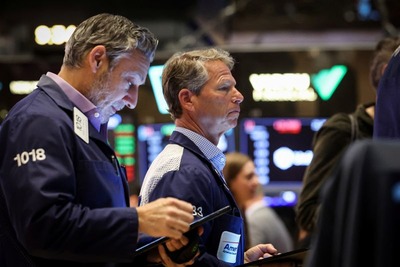MORNING BID AMERICAS-Trade worries entrenched

It's Friday, so today I'll provide a quick overview of what's happening in global markets and then offer you some weekend reading suggestions away from the headlines.
I'd love to hear from you, so please reach out to me at mike.dolan@thomsonreuters.com.
Today's Market Minute
* The Trump administration has proposed a new, more expansive
minerals deal with
The market's epic swoon While the week's trade war fears have cast a pall over world stock markets, bond markets are grappling with a complex mix of subdued inflation, tariff-related future price fears and mounting public debt. U.S. President Donald Trump's auto tariff announcement this week elicited promises of retaliatory action as well as last minute negotiations to head off further sweeping tariff moves next week. Most economists' believe a widespread trade war will depress global growth and lift inflation - by how much and for how long remains a matter of debate.
With stocks around the world deep in the red again on
Friday, U.S. futures are down again ahead of the bell.
Trade war concerns remain the dominant issue rattling markets,
but rancorous geopolitics - over messy
Perhaps unsurprisingly, gold prices hit a new record on Friday, clocking a 17% gain for 2025 so far.
The whole picture is even more complicated for bond markets, with 10-year and 30-year Treasury yields hitting their highest in over a month on Thursday, even as shorter-dated yields remained subdued. That expanded the 2-year and 30-year yield spread to its widest in three years.
The growth and inflation calculus from the brewing trade war may explain some of this move.
But in the meantime, U.S. inflation numbers remain subdued, and the high-frequency hard data show that the growth picture is holding up. Though, of course, the new trade barriers have yet to be imposed.
The Federal Reserve's favoured inflation gauge from the personal consumption expenditures series is due for release on Friday and expected to show that headline inflation remained steady at 2.5% last month.
That combination, along with the continued retreat of stock
prices, helped push 10-year Treasury yields lower on
Friday, though longer term concerns continue to rankle.
With this year's budget impasse in
A lot can happen over 30 days, never mind 30 years. But even with that caveat, the CBO's numbers are unnerving. It shows federal deficits accelerating to 7.3% of GDP in fiscal year 2055 from 6.2% in 2025, well above the 3.9% average over the past 30 years. This would bring the U.S. debt/GDP ratio to 156% of GDP in 2055, topping World War Two levels.
Currency rates remain relatively contained, as markets wait for the details of next week's tariff moves. The dollar index was a touch firmer on Friday. But in the background, fractious geopolitics between America and its traditional allies is forcing some strategists to look again at the dollar's dominant role in the world economy and finance, with knock-on implications for global holdings of dollar reserves and Treasuries.
Weekend reading suggestions
Here are some articles away from the day-to-day headlines
that you may find interesting.
* Sino shrug.
Chart of the day
The U.S.'s long-term borrowing rates are rising while short-dated Treasury yields are staying subdued, widening the so-called yield curve gap between 2-year notes and 30-year bonds to its largest in three years. This would typically signal higher economic growth ahead, but it may also signal longer-term inflation and debt supply risks.
Meanwhile, the New York Fed's estimate of the 'term premium' investors demand to cover long-term uncertainties is creeping higher again, although it is still below the 10-year highs hit in January.
Today's events to watch
* US February personal consumption expenditures (PCE)
inflation gauge; final reading of
* Federal Reserve Board Governor
* U.S. Vice President JD Vance visits
* European Union Trade Commissioner
Opinions expressed are those of the author. They do not reflect
the views of
(By
(c) Reuters 2025. All rights reserved. Republication or redistribution of Reuters content, including by caching, framing or similar means, is expressly prohibited without the prior written consent of Reuters. Reuters and the Reuters sphere logo are registered trademarks and trademarks of the Reuters group of companies around the world.
Related News
-
Morning Bid: New quarter, same problems
Reuters - 7:04 AM ET 4/1/2025
-
GLOBAL MARKETS-Stocks rise, gold at record as investors await Trump tariff clarity
Reuters - 7:03 AM ET 4/1/2025
-
MORNING BID AMERICAS-New quarter, same problems
Reuters - 7:02 AM ET 4/1/2025
-
Bargain-Hunting, China Factory Report Lift Asian Stock Markets
MT Newswires - 6:44 AM ET 4/1/2025
-
METALS-Copper recovers from two-week low on upbeat data from China
Reuters - 5:43 AM ET 4/1/2025
-
MT Newswires - 5:25 AM ET 4/1/2025
-
GLOBAL MARKETS-Stocks rise, gold hits record as investors await Trump tariff clarity
Reuters - 3:45 AM ET 4/1/2025






